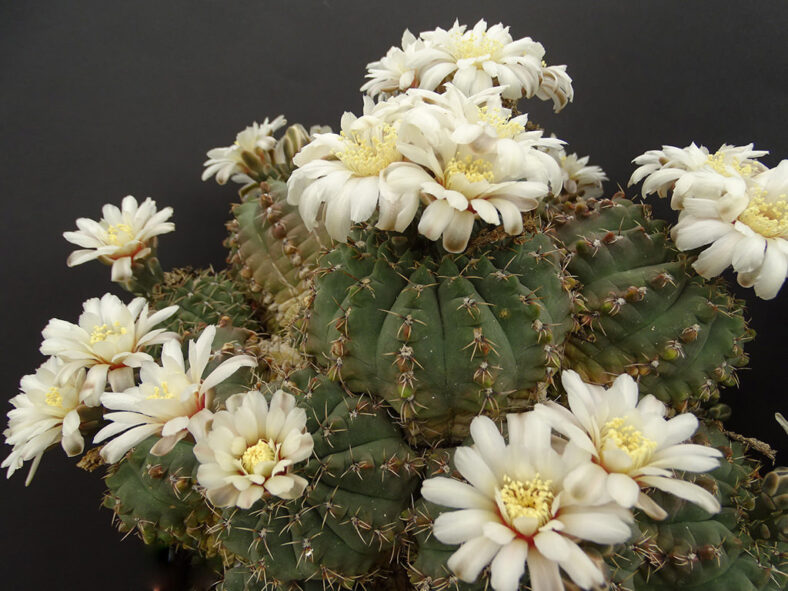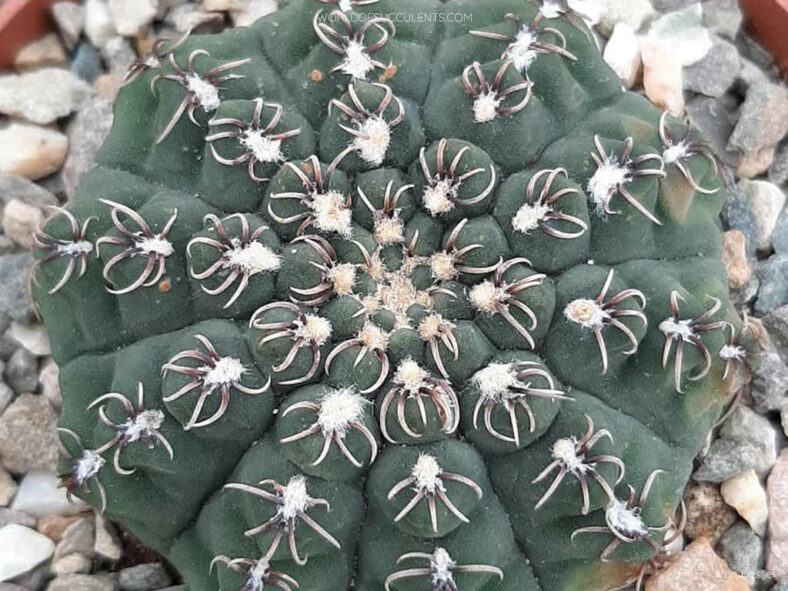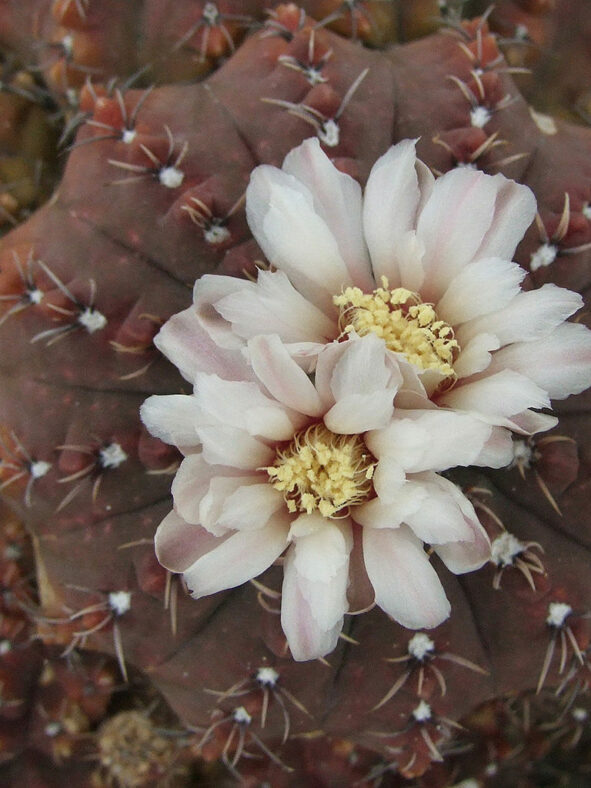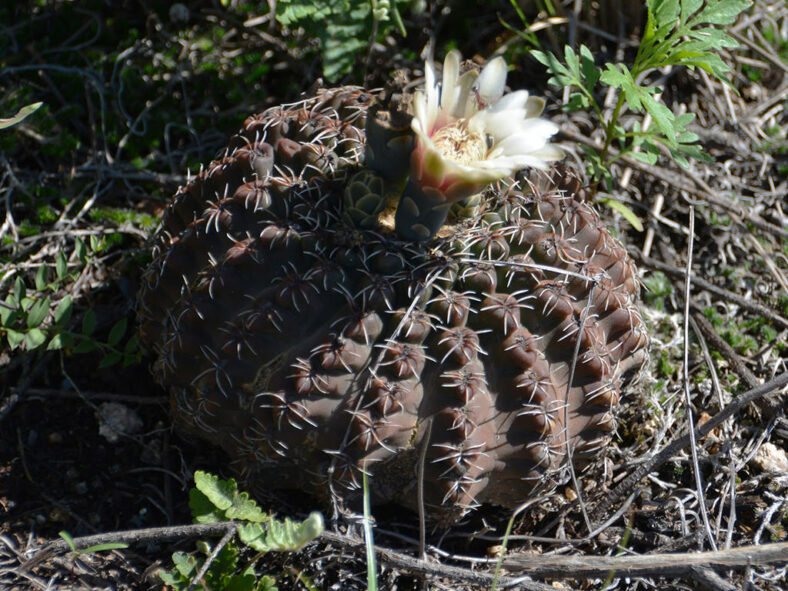Gymnocalycium quehlianum has gained the Award of Garden Merit of the Royal Horticultural Society.
Scientific Name
Gymnocalycium quehlianum (F.Haage ex Quehl) Vaupel ex Hosseus
Common Name(s)
Quehla Chin Cactus, Rose Plaid Cactus
Synonym(s)
Echinocactus quehlianus
Scientific Classification
Family: Cactaceae
Subfamily: Cactoideae
Tribe: Trichocereeae
Genus: Gymnocalycium
Etymology
The varietal epithet "quehlianum" (pronounced kwehl-ee-AY-num) honors Leopold Quehl (1849–1922), a German amateur botanist who specialized in Cactaceae.
Origin
Gymnocalycium quehlianum is native to Argentina. It grows in rocky outcrops in the Sierras de Córdoba at elevations that range from 1,970 to 3,940 feet (600 to 1,200 m).
Description
Gymnocalycium quehlianum is a slow-growing cactus with spherical stems that have 8 to 14 low, variously tuberculate ribs lined with closely placed, felted areoles bearing clusters of weak spines. The stems can grow solitary or sparingly clustering and reach a diameter of 6 inches (15 cm), but they are usually much smaller. They range in color from brown to dark grayish-green. Each areole bears 5 to 7 radial spines that are pale yellow, brownish at the base, and up to 0.4 inches 91 cm) long.
The flowers are funnel-shaped, white, flushed red at the base of the petals and in the throat, and appear at the top of the stems in the summer. The fruits are club-shaped, greyish-brown, and contain brownish-black seeds.

How to Grow and Care for Gymnocalycium quehlianum
Light: During the hottest months, this cactus requires light shading from the sun; too much shade can cause a loss of flowers.
Soil: Having soil with good drainage is very important for a healthy Gymnocalycium quehlianum. You can either use commercial soil for cacti or make your own mix.
Temperature: This cactus can tolerate high temperatures but is not cold-hardy. Bring it indoors if there is a risk of freezing temperatures. It grows best in USDA Plant Hardiness Zones 9b to 11b, with average minimum winter temperatures ranging from 25 to 50 °F (-3.9 to 10 °C).
Watering: Water your Gymnocalycium quehlianum frequently during the growing season, but allow the soil to dry out completely before watering again. Cut back on watering during winter when it goes dormant.
Fertilizing: While it does not need much fertilizing, occasionally giving the plant extra nutrients will keep it healthy and prolong the time for repotting. During the winter dormancy, there is no need to fertilize.
Repotting: It is recommended to repot this cactus every two years into a pot that is the same size or slightly larger. Late winter or early spring is the best time for repotting.
Propagation: There are two simple ways to propagate Gymnocalycium quehlianum: from seeds or by removing offsets. The best time to remove offsets is during spring and summer when the plant is actively growing. Late spring and early summer are ideal for sowing seeds.
Learn more at How to Grow and Care for Gymnocalycium.
Toxicity of Gymnocalycium quehlianum
Gymnocalycium quehlianum has no toxic effects reported. However, keep it away from pets and children as it has sharp spines.
Links
- Back to genus Gymnocalycium
- Succupedia: Browse succulents by Scientific Name, Common Name, Genus, Family, USDA Hardiness Zone, Origin, or cacti by Genus
Photo Gallery
Click on a photo to see a larger version.


